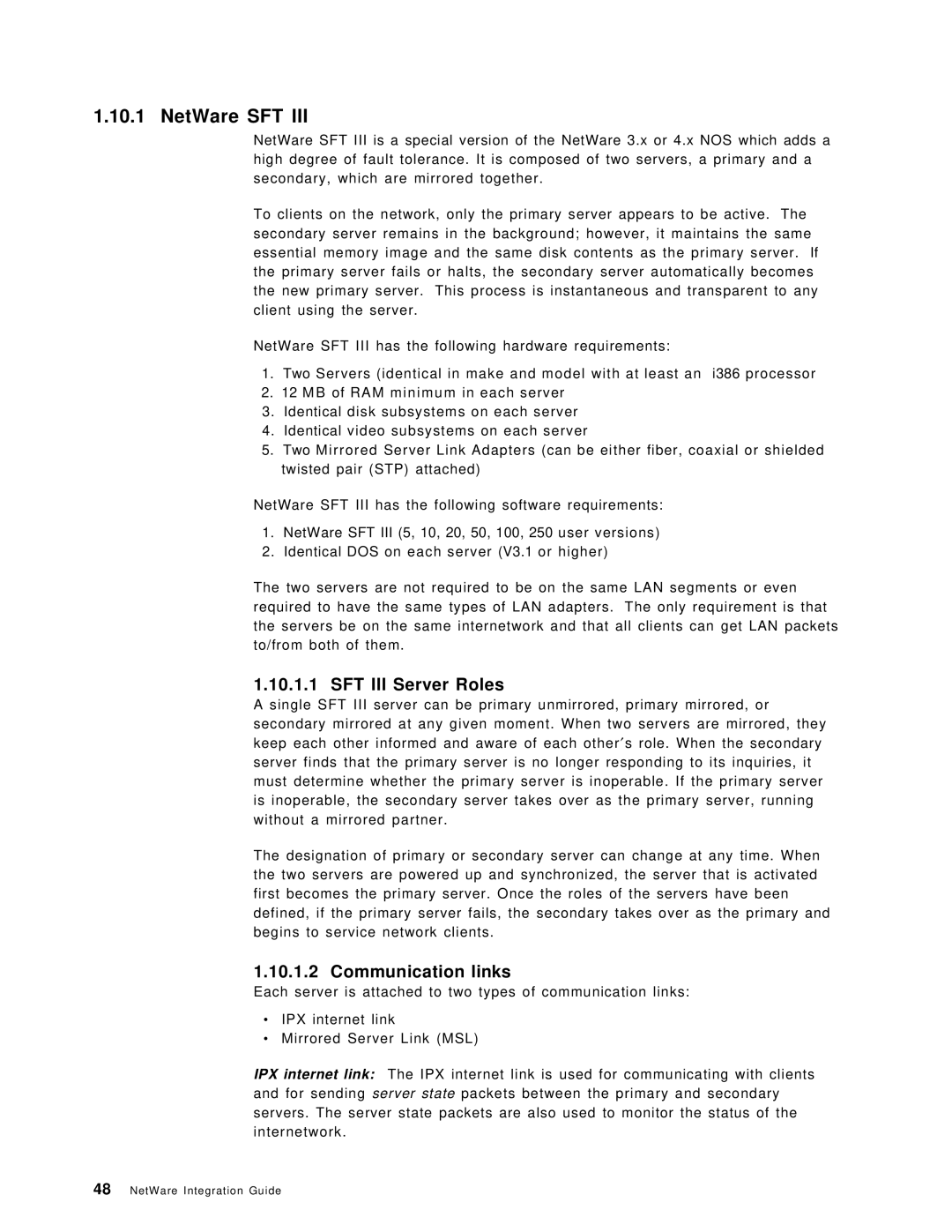1.10.1 NetWare SFT III
NetWare SFT III is a special version of the NetWare 3.x or 4.x NOS which adds a high degree of fault tolerance. It is composed of two servers, a primary and a secondary, which are mirrored together.
To clients on the network, only the primary server appears to be active. The secondary server remains in the background; however, it maintains the same essential memory image and the same disk contents as the primary server. If the primary server fails or halts, the secondary server automatically becomes the new primary server. This process is instantaneous and transparent to any client using the server.
NetWare SFT III has the following hardware requirements:
1.Two Servers (identical in make and model with at least an i386 processor
2.12 MB of RAM minimum in each server
3.Identical disk subsystems on each server
4.Identical video subsystems on each server
5.Two Mirrored Server Link Adapters (can be either fiber, coaxial or shielded twisted pair (STP) attached)
NetWare SFT III has the following software requirements:
1.NetWare SFT III (5, 10, 20, 50, 100, 250 user versions)
2.Identical DOS on each server (V3.1 or higher)
The two servers are not required to be on the same LAN segments or even required to have the same types of LAN adapters. The only requirement is that the servers be on the same internetwork and that all clients can get LAN packets to/from both of them.
1.10.1.1 SFT III Server Roles
A single SFT III server can be primary unmirrored, primary mirrored, or secondary mirrored at any given moment. When two servers are mirrored, they keep each other informed and aware of each other′s role. When the secondary server finds that the primary server is no longer responding to its inquiries, it must determine whether the primary server is inoperable. If the primary server is inoperable, the secondary server takes over as the primary server, running without a mirrored partner.
The designation of primary or secondary server can change at any time. When the two servers are powered up and synchronized, the server that is activated first becomes the primary server. Once the roles of the servers have been defined, if the primary server fails, the secondary takes over as the primary and begins to service network clients.
1.10.1.2 Communication links
Each server is attached to two types of communication links:
∙
∙
IPX internet link
Mirrored Server Link (MSL)
IPX internet link: The IPX internet link is used for communicating with clients and for sending server state packets between the primary and secondary servers. The server state packets are also used to monitor the status of the internetwork.
48NetWare Integration Guide
